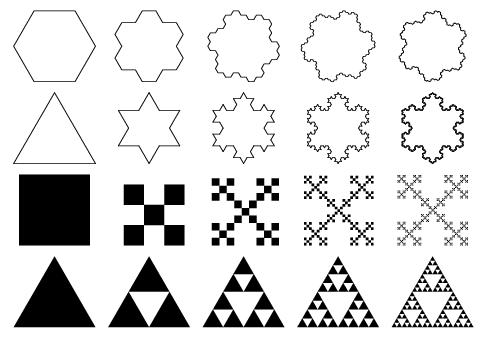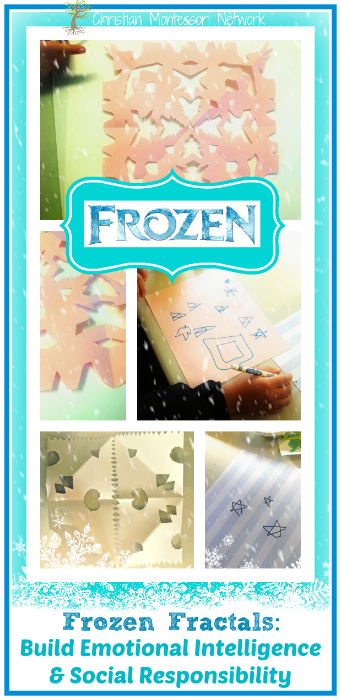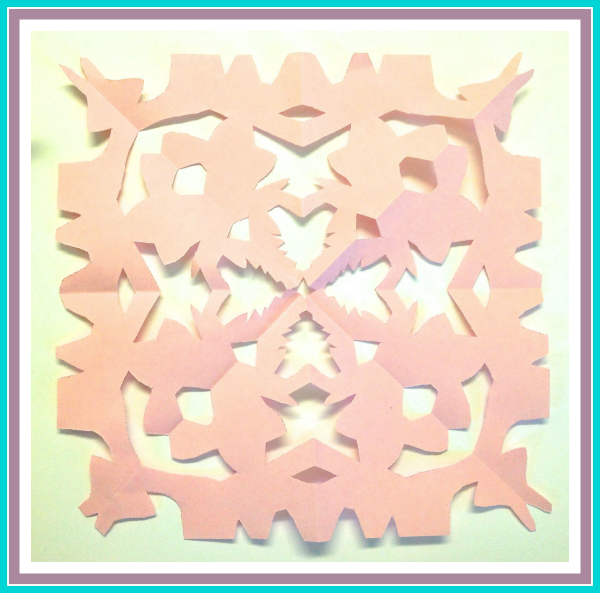Sometimes, when we are in the midst of teaching kids practical life skills, pre-writing skills, or just getting food on the table, we can overlook a major component of their development: emotional intelligence and social responsibility.
One of the wonderful aspects of the Disney movie Frozen is the many opportunities it gives for emotional intelligence building.
While we also discussed the concept of forgiveness (Teaching Children to Let It Go), we also discussed how we can influence and create a positive world by emulating the characteristics we want to see.
That might seem like an odd concept to relate to Frozen, but one of the most interesting words that children pick up on while listening to “Let It Go” is fractals.
Fractals are “a curve or geometric figure, each part of which has the same statistical character as the whole.” Or to put it in easier terms, a fractal is something where the parts of it look the same as the whole of it.
Need an example?
 Citation: Weisstein, Eric W. “Fractal.” From MathWorld–A Wolfram Web Resource. http://mathworld.wolfram.com/Fractal.html
Citation: Weisstein, Eric W. “Fractal.” From MathWorld–A Wolfram Web Resource. http://mathworld.wolfram.com/Fractal.html
In the movie, snowflakes are referred to as “frozen fractals” and we can also witness fractals in various vegetables, eyes, or butterflies.
To start this discussion in my ministry, I started having the children attempt to make their own fractals.
Some make cut-out snowflake fractals, while others tried to draw their own fractal designs. They all had ample opportunity to explore the creation of fractals and become very familiar with the concept.
They also noted how hard it was to create a fractal, which was a pivotal point in our discussion.
I suggested that trying to create something, either as a whole or on a small scale, can be hard, especially when we have competing challenges, or one component is just not co-operating.
We started discussing how it was important to focus on the small act of creation, of getting each section and cut correct, in order to be effective in creating a whole snowflake that we were proud of. Each small cut with the scissors has the ability to create a giant, fractured mess, or a beautiful whole. And this might seem like a total tangent, but creating the snowflake is much like trying to make a positive influence in the world.
We must create and focus on the small details and shape them in the way that we want to see the whole turn out.
In other words, if we want to see a positive, loving universe, we need to first concentrate on our own small actions and thoughts, and ensure that what we are personally creating (within ourselves and our interactions) is positive and loving.
By being the change, or exemplifying what we want to see, we are helping to create a world (or community) that mirrors those values.
Even when it seems like a small change or a small action, the effect on the whole can be dramatic, especially if our kindness sets off a chain reaction or encourages others to also make positive and kind choices.
The children were incredibly moved by the possibility of effecting others by choices in their own lives and behaviours. Some had an increased sense of responsibility, while others were excited to “make the world happy.”
This was a great, thought-provoking and hands-on activity that I hope your children love as much as mine did.
Please pin or share this idea to inspire others to “be fractals.”



Leave a Reply